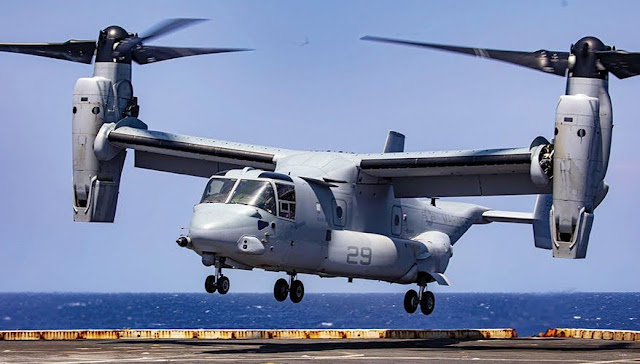The Marines of the United States are getting ready for a big fight in the Indo-Pacific. Because of worries about China's plans to grow and Beijing's words about Taiwan, the Marine Corps is going through some of the biggest changes in its history. As part of his Force Design 2030 plan to better prepare the Corps for the maritime environment of the Indo-Pacific, the Marine Corps Commandant has given this order. Instead of being a second land army ready for long campaigns in the Middle East, the Marine Corps is going back to its roots in the sea.
But because the Indo-Pacific is the world's largest maritime theater, transporting Marines and supplies from Hawaii to Guam and elsewhere in the region is difficult. The Marine Corps, on the other hand, is sure that the MV-22 Osprey can travel the region's long distances. Marine Medium Tiltrotor Squadron 268 flew from Australia to Hawaii, which is more than 6,100 miles away, after an operational deployment in Australia, according to a statement from the Marine Corps. Capt. John Wilkinson, a pilot with VMM-268, has said, "The MV-22s are capable and versatile aircraft for operations in the Pacific."
The flight over the Pacific Ocean shows how the MAG-24 can help the mobility and maneuverability of ground forces in the huge Indo-Pacific theater of operations. According to a Marine Corps statement, "MV-22s, coupled with KC-130s, provide unparalleled mobility at the tactical level." These planes allow Marine Air Group 24 to transport troops and supplies anywhere in the Pacific. Col. Manlee Herrington says, "These capabilities let us try out and put into practice operational ideas that are important for building the Fleet Marine Force of the future."
The Marine Corps placed a premium on this flight. Australia, Fiji, American Samoa, and the Republic of Kiribati, all stops on the transpacific flight, "are historically significant in the South Pacific and steeped in Marine Corps lore," the statement said. During World War II, the United States and its allies used the islands as bases of operations. Their contribution to the war effort helped make the area stable and prosperous, which has been the case for the past 80 years.
Maintaining a free and open Indo-Pacific requires a continuous presence of marine aviation and strengthened relationships with our allies and partners in the region. Supporting operations across the Indo-Pacific with our allies and partners, the 1st Marine Aircraft Wing and Marine Aircraft Group 24 (MAG-24) remain pillars of national and regional security.


